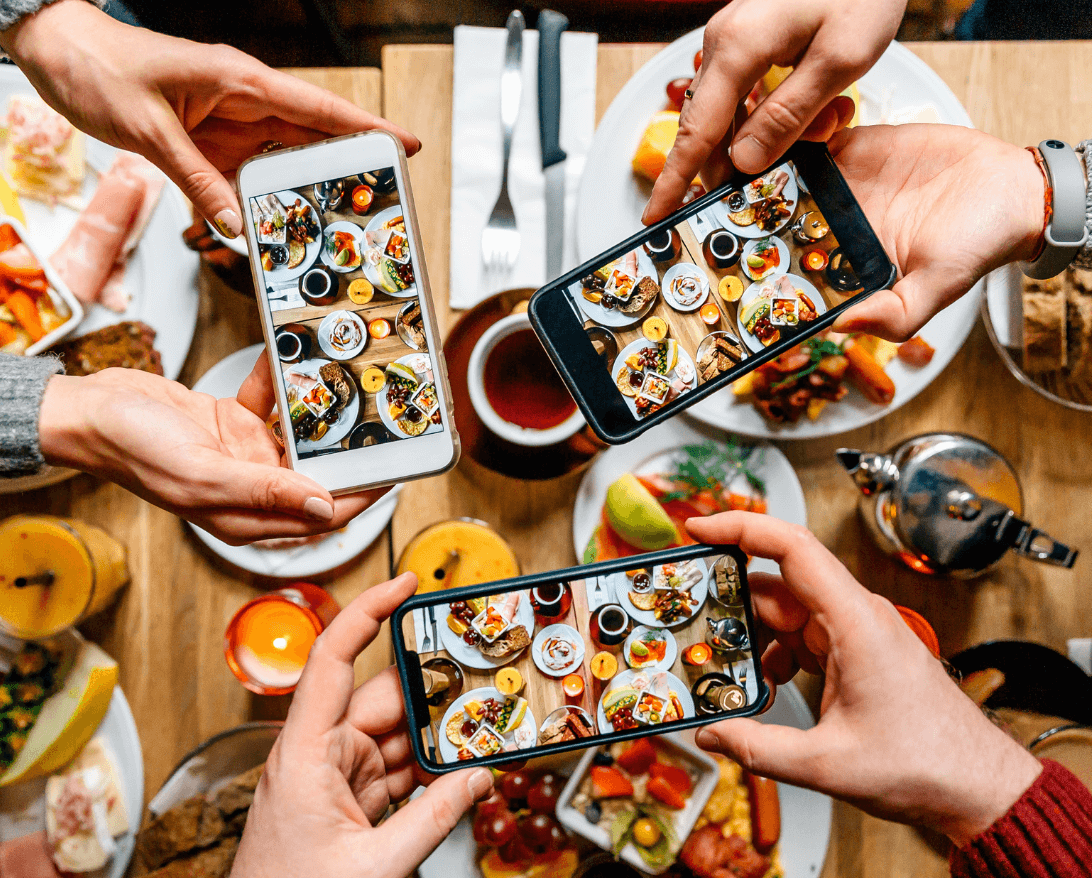16 Aug, 2023
Restaurant Marketing Strategies
In today’s highly competitive environment, restaurant marketing requires precise, dependable, and complete consumer data. Data acquired about your actual consumers can be used in both online and offline marketing campaigns.
As technology evolves and client tastes change, successful marketing techniques must be examined and updated accordingly.
Every stage of the client’s journey should be examined. For example, how do new consumers find your restaurant on the internet? Is your website optimized, and does it provide a good user experience? How can you keep consumers coming back for more?
1. Optimization of NAPs
NAP is an abbreviation for Name, Address, and Phone Number. You may use a variety of restaurant marketing strategies to increase business visibility and attract new consumers. Aside from paid advertising, ranking high in local organic search results is critical.
Assume a customer discovers your website but cannot identify where you are located or how to contact you. One option is to include important information like your company name and phone number at the top of your page. If we consider Google, having such information on your website helps it appear in geo-targeted searches.
Suppose a customer goes to a search engine like Google or Google News API and types in ‘Find local restaurants near me.’ Will your website appear in the results of that search? If you use the same information across all of your platforms and your website, your chances of appearing in those Google results skyrocket.
In that sense, make sure to double-check your NAP across the web to ensure its consistency and accuracy, as this directly influences your SEO ranking and search visibility.
2. Engagement on Social Media
Social media for your restaurant should not be overlooked while planning and exploring strategies to improve your restaurant’s marketing strategy. According to brightlocal, at least 87% of internet users are influenced by reviews and comments.
Engagement is a measure you should monitor regardless of whether you send your message via Twitter, Facebook, or Linkedin. Consider online marketing for restaurant engagement to be a long-term commitment. Anyone, whether an individual, a restaurant, or a random person can create an Instagram, Linkedin or Twitter account. The key is in the way they handle their social media. When a customer interacts with your company on social media, they trust your brand to meet their needs.
Your content should be relevant and customized to increase engagement. For example, one strategy is to utilize location-based advertising to attract local clients. In addition, social media marketing can boost sales and help you grow your brand. Aside from concentrating on engagement, you can use several more techniques to be effective on social media.

3. Loyalty Rewards
Restaurant loyalty programs, when done correctly, can increase repeat sales. This is because many consumers are focused on earning points and receiving free meals. This method is used by several large food chains, like Starbucks, Panera Bread, and TGI Fridays, which have attracted millions of customers due to their loyalty programs.
What factors contribute to the success of a loyalty program? There are several factors to consider. For example, how simple it is to use, its digital alternative, and whether it is marketed on all accessible platforms, such as Instagram or within your referral network.
Because they do not focus only on clients who have already visited your restaurants; loyalty rewards programs help your marketing and sales efforts. In addition, you can attract new clients if your incentives are unique and compelling.
4. Email Marketing
Email marketing is a practical and low-cost method of attracting local customers and increasing business income. Restaurant email campaigns and newsletters enable you to reach out to both current and potential consumers.
Email marketing allows restaurants to notify their consumers about current promotions and serves as a branding strategy. You can stand out from the rest if your messaging is well-crafted and relevant.
Personalization is a significant trend that has been present for several years. One idea is to segment your audience and adapt your message to their needs and expectations.
In addition, you don’t have to stop at emails only. You can use handwritten cards and send them to your customers to build a friendly and warm relationship.
Another part of your restaurant’s marketing strategy that should be addressed is developing an email marketing list that you can use to take care of leads, enhance sales, and increase traffic.
5.Practical Website Design
You should ensure that your customers are completely satisfied and that their needs are met when they enter your restaurant. So what happens when a customer clicks on your ad or a link you’ve provided?
It is critical that your website is functional for all visitors, whether they are returning or new customers. For example, chefs want to ensure that their customers enjoy what they see on their plates when choosing the menu or sending it out. Similarly, your website should meet industry standards while also telling your brand’s story.
6. Branding
Another excellent restaurant marketing strategy is to concentrate the brand strategy. Make sure your establishment’s core values are in sync with your business goals at least once a year. For example, is your restaurant primarily focused on vegan goods, or do you desire to promote fine dining?
Whatever your fundamental values are, they will form the basis of your branding strategy. Knowing your values allows your restaurant to discover the target audiences and reach them strategically based on their genuine requirements.
It is simpler to place yourself on the market and create personalized experiences for each of your clients once you have examined who you are as a company and have a clear customer profile.
7. Online Delivery
Younger and older generations are becoming increasingly accustomed to ordering their food using a phone app or by visiting their favorite restaurant’s website and purchasing food in a few clicks. Online food delivery is a trend, and for your company to stay up with the times and the competition, your consumers should be able to order their food in various ways.
If your restaurant has an internet presence, an online delivery system can increase income and convert some consumers into regular customers. Online ordering applications should keep the customer’s attention and be simple to use. Users that have downloaded your app or attempted to order from your menu have the highest purchasing intent.

8. Menu Promotion
You improved your website and focused on interacting with your consumers on various social platforms as part of your restaurant marketing strategies.
One of the most significant takeaways as a restaurant marketing idea is to optimize the menu. Using your menu as a part of your restaurant marketing strategy helps your company give one of the essential information to your customers: the type of meals they can eat at your restaurant.
A digital restaurant menu increases your visibility across all marketing platforms and puts you in front of your potential customers. As a recommendation, ensure that the information you give in the menu is correct, up to date, and easily accessible, particularly to users with disabilities.
9. Local Community Marketing
Local community marketing can transform your marketing efforts. However, local SEO is only one aspect of location-based marketing. Localized awareness can be increased through optimizing your website, organic traffic, and sponsored advertising. In addition, you can connect with locals on their preferred social media platforms in addition to adding hyper-local keywords.
Targeting local communities and establishing a space for your users to engage with you on Twitter, Facebook, or any other platform helps you to demonstrate that you provide exceptional customer service, or it can simply be a discussion starter.
If you want to get testimonials, it is easier to get local evaluations than reach out to people on a national scale. Localized advertisements also have a greater ROI since they “speak the local language.”
